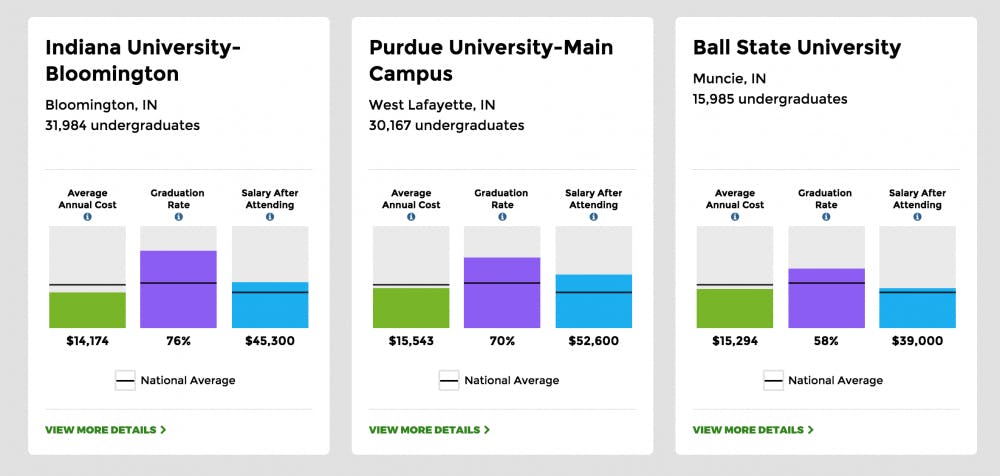Ball State’s graduation rate, retention rate and salary after graduation are higher than the national average, according to the revamped College Scorecard website released Sept. 12.
President Obama launched College Scorecard, hosted by the Department of Education website, to make data about universities more accessible. Students can search for colleges based on size, location, programs of study or by name. By 2020, two in three job openings will require some form of post-high school education, Obama said in an address in Des Moines, Iowa on Sept. 14.
“Right now, a lot of families don’t have all the information they need to choose the right school,” Obama said in his address. “And a lot of the college ranking systems that you see … reward schools just for spending more money, or for rejecting more students. And I think that’s the wrong focus. I think that our colleges should be focusing on affordability and on serving students and providing them good value.”
The website shows how a particular college compares to the national average in annual cost, graduation rate and salary after attending. It also provides financial aid and loan information, debt after graduation, retention rates, average SAT and ACT scores and student body demographics.
Cost-wise, Ball State falls below the national average by about $1,500. It also has 14 percent more students graduate and 11 percent more students return after the first year. However, 18 percent more students have debt after graduation, and the average salary after graduation is not much higher than most other colleges.
Freshman Academic Adviser Kaley Roberts thinks having more data available could be very useful for students. However, she is not sure if College Scorecard will help retention rates. She said even if a college has the right numbers, it won’t necessarily be the right college for a particular student. Incoming freshmen should physically explore the colleges they are interested in, along with using the data.
“It all depends on if and how students use the data,” Roberts said. “Students may have their heart set on a certain school and go there, but in the end realize it wasn’t for them.”
Potential Ball State students have heard about this new tool, and some are sad they missed out. Courteney Monroe, a senior at Western Boone Jr.-Sr. High School in Thorntown, Ind., said she could have used College Search when she was applying to colleges.
“I would have used it in my college search, had I known about it when I started looking for colleges,” Monroe said. “Ball State was already on my list of universities to apply to, but I’m sure that with the scorecard it would have made my list a lot sooner.”
Emma Roberts, a senior at McCutcheon High School in Lafayette, Ind., said the website is a good way to get “real, non-Google, non-general numbers.”
“Being able to see how a school’s national averages compare to national averages is an awesome advantage I’ve only seen occasionally and in moderation with other college search tools,” Roberts said.
Monroe said College Scorecard will give future college students information they need to make a more informed decision.
“Every student deserves to explore all of their options instead of just settling for the cheapest and nearest option,” Monroe said.





